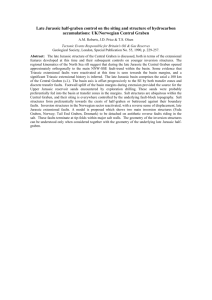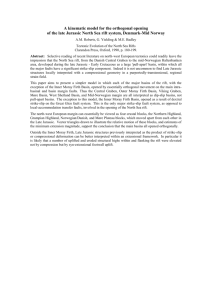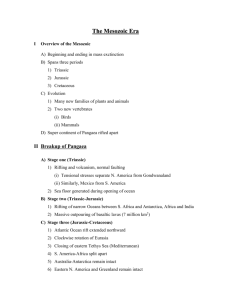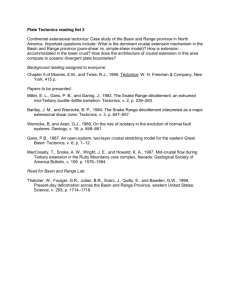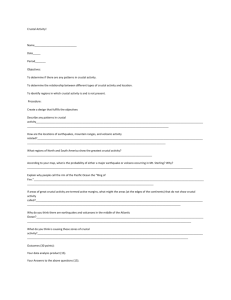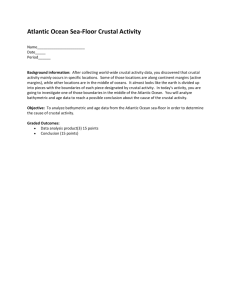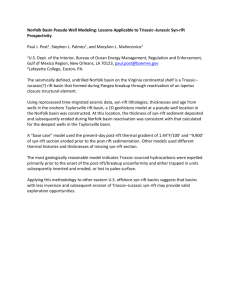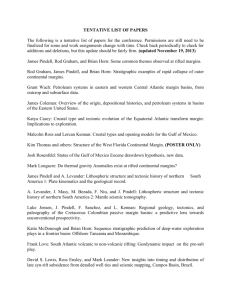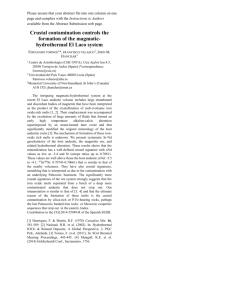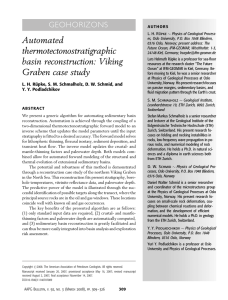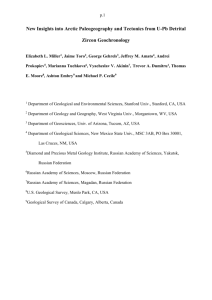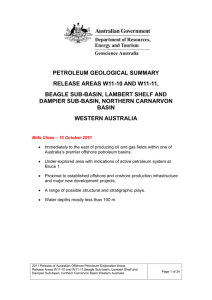Application of a flexural cantilever simple-shear/pure
advertisement
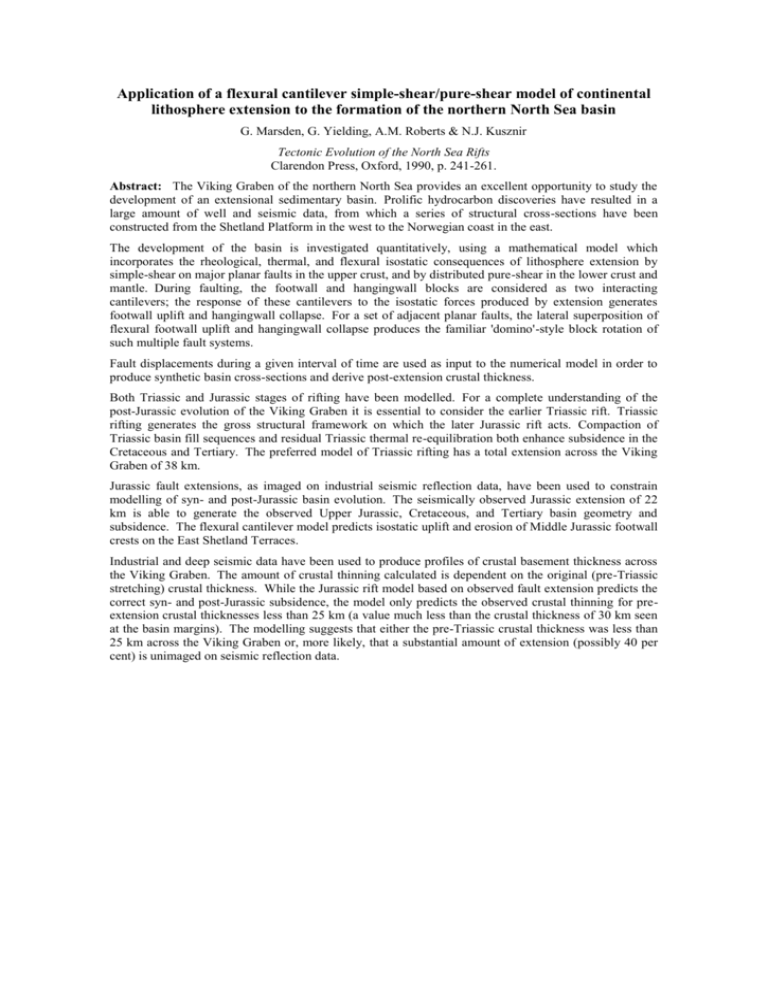
Application of a flexural cantilever simple-shear/pure-shear model of continental lithosphere extension to the formation of the northern North Sea basin G. Marsden, G. Yielding, A.M. Roberts & N.J. Kusznir Tectonic Evolution of the North Sea Rifts Clarendon Press, Oxford, 1990, p. 241-261. Abstract: The Viking Graben of the northern North Sea provides an excellent opportunity to study the development of an extensional sedimentary basin. Prolific hydrocarbon discoveries have resulted in a large amount of well and seismic data, from which a series of structural cross-sections have been constructed from the Shetland Platform in the west to the Norwegian coast in the east. The development of the basin is investigated quantitatively, using a mathematical model which incorporates the rheological, thermal, and flexural isostatic consequences of lithosphere extension by simple-shear on major planar faults in the upper crust, and by distributed pure-shear in the lower crust and mantle. During faulting, the footwall and hangingwall blocks are considered as two interacting cantilevers; the response of these cantilevers to the isostatic forces produced by extension generates footwall uplift and hangingwall collapse. For a set of adjacent planar faults, the lateral superposition of flexural footwall uplift and hangingwall collapse produces the familiar 'domino'-style block rotation of such multiple fault systems. Fault displacements during a given interval of time are used as input to the numerical model in order to produce synthetic basin cross-sections and derive post-extension crustal thickness. Both Triassic and Jurassic stages of rifting have been modelled. For a complete understanding of the post-Jurassic evolution of the Viking Graben it is essential to consider the earlier Triassic rift. Triassic rifting generates the gross structural framework on which the later Jurassic rift acts. Compaction of Triassic basin fill sequences and residual Triassic thermal re-equilibration both enhance subsidence in the Cretaceous and Tertiary. The preferred model of Triassic rifting has a total extension across the Viking Graben of 38 km. Jurassic fault extensions, as imaged on industrial seismic reflection data, have been used to constrain modelling of syn- and post-Jurassic basin evolution. The seismically observed Jurassic extension of 22 km is able to generate the observed Upper Jurassic, Cretaceous, and Tertiary basin geometry and subsidence. The flexural cantilever model predicts isostatic uplift and erosion of Middle Jurassic footwall crests on the East Shetland Terraces. Industrial and deep seismic data have been used to produce profiles of crustal basement thickness across the Viking Graben. The amount of crustal thinning calculated is dependent on the original (pre-Triassic stretching) crustal thickness. While the Jurassic rift model based on observed fault extension predicts the correct syn- and post-Jurassic subsidence, the model only predicts the observed crustal thinning for preextension crustal thicknesses less than 25 km (a value much less than the crustal thickness of 30 km seen at the basin margins). The modelling suggests that either the pre-Triassic crustal thickness was less than 25 km across the Viking Graben or, more likely, that a substantial amount of extension (possibly 40 per cent) is unimaged on seismic reflection data.
